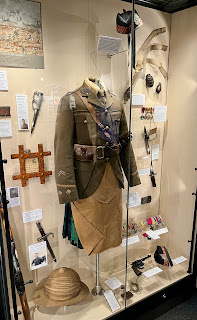A work trip to Stirling yesterday included a meeting in Stirling castle, which makes an enjoyable change from the standard dull committee room. Despite regularly driving past the castle, I haven't been inside the castle for years.
Stirling Castle is one of the largest and most important castles in Scotland. It is situated on a crag surrounded on three sides by steep cliffs, giving it a solid defensive position. Its strategic location, guarding a downstream crossing of the River Forth, has made it an important fortification in the region from the earliest times. There have been at least eight sieges of Stirling Castle, including several during the Wars of Scottish Independence, with the last being in 1746, when Bonnie Prince Charlie unsuccessfully tried to take the castle.
My first stop was the Grand Battery, which severely damaged the Jacobite forces in 1746. You can also see the site of the old Stirling Bridge, William Wallace's famous victory, and Bannockburn, Robert Bruce's decisive battle site, even if the precise location is contested.
The buildings inside the castle are not particularly interesting, although they are often featured in the books of Nigel Tranter, which I have been re-reading.
The highlight of the tour was undoubtedly the regimental museum of the Argyll and Sutherland Highlanders. Even if it was odd to take a German client around parts of it! The museum is fitted into many small rooms in the castle on several floors. I'm sure it has been upgraded since my last visit and the displays are excellent, with clear modern descriptions.
The museum has a collection of paintings that will be familiar as they have often been reproduced in books.
 |
| Mad Mitch in Aden |
 |
| Korean War |
The story has passed into Scottish military history folklore. As bayonets were fixed, Campbell rode to the front and called out to his troops, ‘There is no retreat from here, men! You must die where you stand.’ The response was, ‘Aye, aye, Sir Colin, an needs be, we’ll do that.’ A story that encapsulates the appeal of military history in a couple of sentences.













Very nice. TBH whenever we’ve been to Scotland we’ve spent our time visiting ruined castles (or some “family/friend” stuff my wife insists upon). Still I reckon I’ve barely scratched the surface 😉
ReplyDeleteCheers,
Geoff